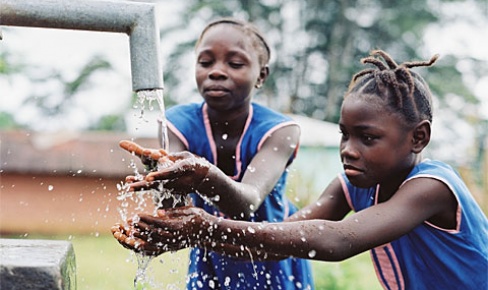This week, over 20,000 participants will come together for the 19th International AIDS Conference in Washington DC, USA. Held every two years, this week-long conference which began on Sunday provides an opportunity for heads of state, UN leaders, researchers, activists, philanthropists and practitioners to gather and discuss the latest developments in the world of HIV. Organised by the International AIDS Society, the AIDS Conference is the largest meeting in the world dedicated to a single global health topic.
Last year marked the 30th anniversary of the discovery of AIDS. The UN speaks of ‘turning the tide’ on the HIV epidemic – as acknowledged by this year’s conference theme – taking stock of all the wins the global community has had against this disease. Rates of new infections and AIDS-related deaths are going down. Treatment and prevention rates are going up. We have reached a point where the virtual elimination of transmission from mother to child is in sight. Most recently, the discovery of the huge preventative effects that antiretroviral medication has on the transmission of HIV was heralded, quite rightly, as a game changer.
Despite much success, there is still a way to go. Millions still do not have access to adequate prevention, treatment and care services. Stigma and discrimination against people living with HIV is endemic in some countries. 7000 people are newly infected each day. 1.7 million people still die each year.
I know what you’re thinking. What does this have to do with water, sanitation and hygiene (WASH)? There is growing recognition of the unique needs people living with HIV (PLHIV) have in regards to accessing clean water and adequate sanitation. Weakened immune systems mean that PLHIV are particularly vulnerable to illnesses, and diarrhoea caused by a lack of clean water and adequate sanitation can exacerbate their illness and worsen their prognosis. HIV positive children have been found to be 11 times more likely to die from diarrhoea than those who are HIV negative. Diarrhoeal disease can also affect the absorption of antiretroviral medication.
 The WASH and HIV sectors share many parallels. At their core, both sectors discuss issues that make many people uncomfortable. Both rely, in part, on changing behaviours that are deeply personal and rooted in a wider cultural context. Both areas have components that still vie for substantial political support; for the HIV sector, arguably less attention is given to prevention efforts around men who have sex with men, and injecting drug users; in WASH, sanitation is afforded a lower priority than interventions that deal with ensuring access to clean water.
The WASH and HIV sectors share many parallels. At their core, both sectors discuss issues that make many people uncomfortable. Both rely, in part, on changing behaviours that are deeply personal and rooted in a wider cultural context. Both areas have components that still vie for substantial political support; for the HIV sector, arguably less attention is given to prevention efforts around men who have sex with men, and injecting drug users; in WASH, sanitation is afforded a lower priority than interventions that deal with ensuring access to clean water.
In this stunted economic climate (funding commitments for the global AIDS response alone has fallen short by $7 billion), now is the time to integrate approaches, to move towards partnerships that offer a high value for money. For WASH and HIV this means making global, national and community level HIV policies and programs sensitive to the WASH needs of people living with HIV. It means including hygiene messages that promote hand washing and other hygiene behaviours in the delivery of voluntary counselling and testing services, during the distribution of ARVS, and at antenatal care clinics that enable mothers to adopt behaviours that protect themselves and their children. It means integrating HIV education in the hygiene components of WASH projects, and including HIV affected households, particularly those involving children, as part of a strategy to reach the poorest and most vulnerable with WASH interventions.
Today, Water Aid and partners will be hosting a session at AIDS 2012 on community based approaches to meeting the most basic water, sanitation and hygiene need of families affected by HIV. This talk will present lessons learned by the WASH and HIV community on the importance of integration. These lessons will also form the foundation of the work taking place in Papua New Guinea later this year, when WASH colleagues will start to assess how we address the needs of PLHIV through our work. We will also be working with colleagues from the HIV sector to examine how their work could be more sensitive to the WASH needs of the people they serve. Take a look at inclusivewash.org.au to see how this work is progressing.
By integrating WASH and HIV we will not just maximise our value for money and extend our reach, we will also achieve greater outcomes for the poorest and most vulnerable, and will thereby do our part to help turn the tide on the HIV epidemic.
Vanessa Veronese is a Research Assistant in Public Health at WaterAid Australia.


Of course WASH is an essential element of the battle against HIV/AIDS and it was great to see such positive support for it in DC this year.